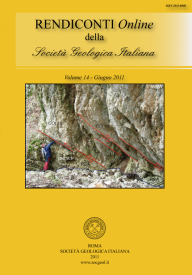
Dal rilevamento alla definizione delle linee guida per la cartografia delle aree sommerse nei fogli geologici alla scala 1:50.000
Silvana D'Angelo (*) & Andrea Fiorentino (*)
(*) Dipartimento per la Difesa del Suolo – Servizio Geologico d'Italia, ISPRA. E-mail: silvana.dangelo@isprambiente.it
Volume: 14/2011
Pages: 11-16
Abstract
Mapping of Submerged areas at 1:50,000 scale in the Carg Project.
Within the national geological mapping programme (geological maps at 1:50,000 scale including both emerged and submerged areas), rules for marine areas have been tuned to represent both the basic geological knowledge and the applied aspects of the seafloor and sub-bottom features. At present, approximately 40% of the total coastal maps at 1:50,000 scale, extending generally till the edge of the continental shelf, have been surveyed.
The cartography is focused both on the postglacial stratigraphy and on present-day distribution of sediments whereas data on depositional systems are obtained by means of geophysical methods, remotely operated video and seafloor samplings.
The main tasks of the mapping rules related to marine areas are:
• to uniform criteria for geological surveying and cartographic representation
• to identify seafloor conditions and the relationship between the sea bed and its underlying geology
• to obtain data which can be used for applied purposes and geothematical maps.
Cartography of outcropping units is focused on:
• stratigraphy: i.e. postglacial depositional sequence;
• interpretation of sedimentary processes within an evolutive and environmental frame;
• morphology and sedimentology of the seafloor: i.e. present-day distribution of sediments, main biocoenoses (such as coralligenous buildups and Posidonia meadows) and depositional systems.
The official mapping of the Italian continental shelf is also being carried out cooperating with several institutions such as Universities, CNR Institutes and public organizations (Hydrographic Navy Institute). A single method of representation is applied and all maps are georeferred.
A national geodatabase at 1:25,000 scale stores all the information obtained during surveying (morphology, seismic analysis, sidescan sonar interpretation, bio and thanato-coenosis). The geodatabase structure is under continuous development and its contents are updated regularly.
Keywords
Get Full Text